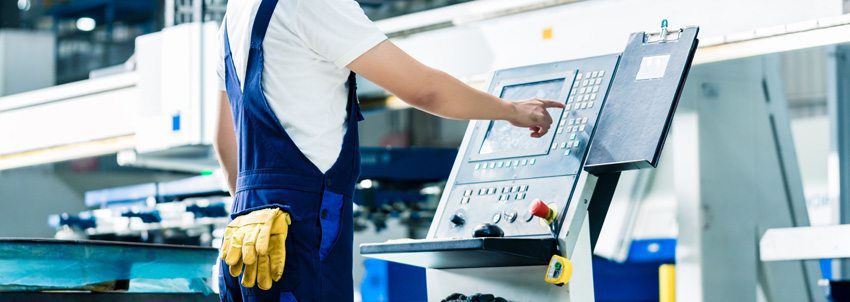
CNC is the acronym for Computer Numerical Control—or computer-controlled fabrication.
A few decades ago, perhaps longer, metal fabrication equipment began to switch from manual measurement systems to computer-controlled measuring systems.
As is typical, the industry as a whole began to make the change, as it quickly became clear that computer-controlled measuring systems were faster, more accurate, dependable and repeatable—meaning you could get the same results time after time, job after job and do it in a much faster way.
In the beginning stages of that industry change, many companies would boast that they had CNC equipment. It was a strategic advantage and, of course, one worth marketing to potential customers.
Examples of CNC fabrication equipment are numerous and now pervasive in the entire manufacturing industry but inside the metal fabrication industry, specifically, there were a few key equipment examples—agree or disagree—that seemed to really revolutionize the overall metal fabrication space.
For All Metals Fabrication, the real start of CNC metal fabrication started with turret punching.
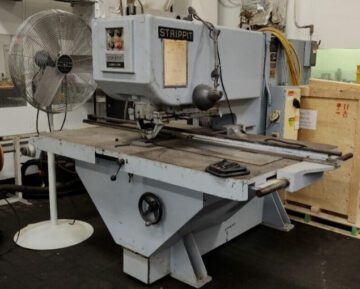
Punching metal, before the CNC turret punch, was a very manual process mostly done on single-station punching machines. This picture is a good example of an old, but popular, single-stage punch manufactured by Strippit.
Every stop and adjustment was made with old-school calibrated gears and measuring systems. If the part required multiple holes, then each stop would be hand-set and used as a backstop to slide the metal against it.
Again, every move, stop and position was done by hand. Once the metal was in position, the operator would step on a foot pedal to engage the punching action.
Clearly, based on this description, particularly if there were multiple holes (which was almost always the case), the repeatability and speed of this manual process was suspect. Many old-time metal shop technicians have a special place in their hearts for these old single-station punches because that is where most of us started.
Still, technology presses forward and soon, as mentioned earlier, CNC turret punches came onto the scene.
CNC punch machines were programmed using interfaces with Computer-Aided Drafting (CAD) software.
Now, instead of a person manually setting up a machine, they download a program into the machine and add the necessary punches to accomplish the job. The industry started to draw parts in CAD software and then convert that code into a CNC program that a machine could understand and implement.
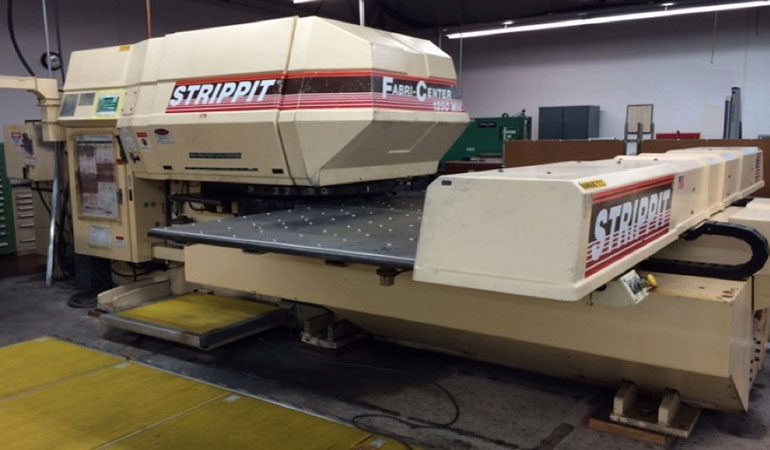
Sticking with Strippit as an example (although these come in numerous brands), the above picture is an example of some of the first CNC punches to come to market. Inside the housing above the table is a turret full of multiple punches, both in size and shape. It might include round, rectangle or square-shaped punches that can rapidly punch the material based on the program sent to the machine. The table itself has rollers on it to allow the metal to slide back and forth. The metal is clamped by claws that drag it back and forth, left and right, to the exact spot needed and then the right punch size engages, per program, to punch a hole through the metal.
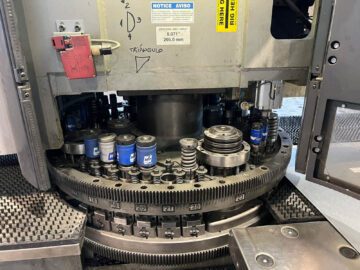
These machines, even back then, moved quickly and efficiently. The loud pounding sound from the punch breaking through the metal became a shop-floor heartbeat that might be similar to hearing somebody punch a nail gun all day long.
Now, a part with a dozen holes, which would have taken an hour to punch manually could be done in seconds. In addition, the parts were extremely accurate and repeatable. Again, for my money, this one machine was the biggest launch into CNC metal fabrication.
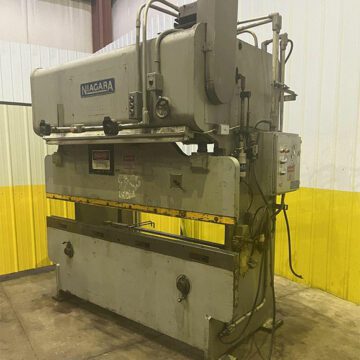
Another piece of equipment that has progressed in major ways using CNC technology is press brake forming. Thirty to forty years ago press brakes and particularly back gauges began using CNC programming. Like any other technology, press brake forming has advanced rapidly in the last forty years. This older style Niagara press brake depended heavily on manual setup and test bending sample parts to get both the back gauge and the depth of bend nailed down. Just like the manual punch, the setup times were long and the repeatability was susceptible to lots of changing factors—with old hydraulic press brakes, something as simple as the oil temperature would impact the depth of the bend.
Today’s modern press brakes use computer-aided setup to manage everything from the back gauging to the depth of forming. In fact, many modern machines like those we use at All Metals Fabrication have screens that illustrate exactly how the user should set up the machine and what sequences bends should be used to form the most complicated of shapes.
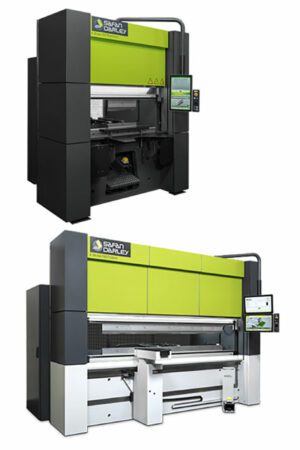
CNC goes to a whole new level here as the machine literally can do simulation bending on software before the parts ever land on the floor. Also, many advanced machines have up to six or seven axis used to back-gauge and form parts.
Also like the CNC punch, these CNC press brakes are extremely accurate and very repeatable which makes for very high quality and predicable parts.
We could provide many more examples of CNC technology in the metal fabrication space. All Metals Fabrication utilizes flat lasers that often cut as precisely as .005″. We have tube lasers, shears, saws, rolls and other equipment that function solely from computer-controlled inputs.
Although it is likely an obvious point, these days, CNC equipment is not something most shops would consider a strategic advantage, in that most modern shops utilize this technology.
The metal fabrication arms race these days is more about how fast your machine runs, how easy and quickly it sets up between jobs. This is particularly true for job shops that traditionally have very low volume, high mix jobs running through their shops. Setup times must be quick and accurate. Any lost time on setup or bad parts is very painful for shops running at competitive rates and, often times, small margins.
This race is now spilling into automation, which basically means running machines without human operators. Just like CNC equipment was the arms race of the eighties, it now seems that automation will be the arms race of the current era.
Automation and robotic intervention are something most of us are accustomed to seeing at big manufacturing plants like Ford or GM, but the increasing ability to model parts in 3D assemblies, combined with technology, and now AI, make automation more of a reality every day.
Most OEMs selling fabrication equipment are now touting robotic intervention for parts runs as small as fifty units, where only a few years ago it would have been more like 500-piece runs.
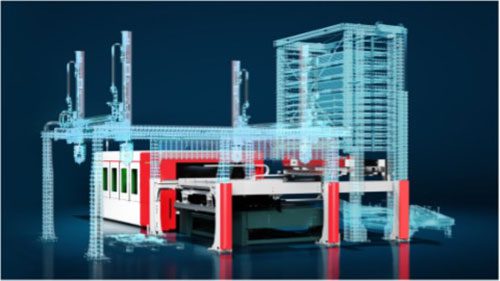
All Metals Fabrication has started employing this automation with our laser cutting technology. We have auto-loading and off-loading of parts on our flat lasers which has almost tripled our throughput in the recent year. Some of our customers are shocked to know that this machine can run without an operator standing at the machine. In fact, it often runs lights out through the early morning hours with no human at the plant.
That, for an old timer, is quite a move from setting up a single station punch with nothing but a hand-crafted blue print and some scribbled notes on a work ticket.
These days the nesting software is communicating with the ERP software and the ERP software is communicating with the estimating software—and now we are almost to the point where our customers can self-quote their own parts by downloading models into our system.
Computer technology, dating back now forty plus years, has truly transformed the metal fabrication industry and many others.
Please contact us at info@allmetalsfab.com if you would like to learn more about how our fabrication services can make your life better.